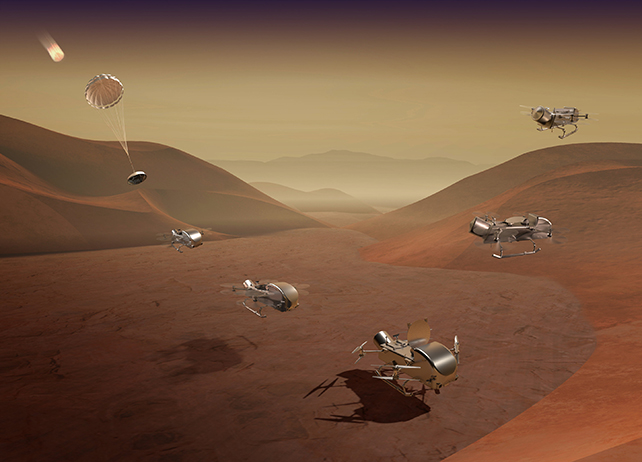There's something very peculiar about the atmosphere surrounding Titan, Saturn's largest moon: rather than staying constantly fixed in line with its surface, the atmosphere wobbles across the course of the seasons.
The discovery was made in new research led by a team from the University of Bristol in the UK, through a detailed analysis of 13 years' worth of infrared light readings. Gas composition and temperature can be interpreted from these readings, and from there the shifting position of the atmosphere.
It's not clear yet what's causing the unusual behavior, but it could eventually lead to more insights about the history of Titan, and other planetary bodies that share similarities with it. That includes Earth, since both have a relatively thick atmosphere, liquid lakes, and weather patterns.
"The behavior of Titan's atmospheric tilt is very strange," says planetary scientist Lucy Wright, from the University of Bristol. "Titan's atmosphere appears to be acting like a gyroscope, stabilizing itself in space."
"Even more intriguingly, we've found that the size of this tilt changes with Titan's seasons."
That seasonal shift suggests the tilt might have something to do with the moon's yearly cycle around the Sun, in tandem with Saturn. A year on Titan lasts almost 30 years on Earth, and comes with major changes in heating and temperature.
However, while the magnitude of the atmospheric tilt changes, the direction it's pointing doesn't: it always remains directed towards the same fixed spot. Working out why is going to take some time and further research.

"What's puzzling is how the tilt direction remains fixed in space, rather than being influenced by the Sun or Saturn," says planetary scientist Nick Teanby, from the University of Bristol.
"That would've given us clues to the cause. Instead, we've got a new mystery on our hands."
One hypothesis the team is considering is that there was a large impact event in Titan's past which caused the atmospheric wobbles to begin, bringing changes in the moon's climate along with them.
This research has a very real practical and immediate use: the Dragonfly spacecraft is scheduled to pay a visit to Titan in 2034. Getting the probe to land successfully in the swirling winds of the Saturnian moon will need a precise understanding of its atmosphere.
Once Dragonfly is in place, we can expect plenty more in the way of fascinating discoveries. The team behind this new study describes Titan as "one of the most intriguing bodies in the Solar System" because of its characteristics – including being the only moon in the Solar System to have a proper atmosphere.
Titan could even enhance our understanding of how life might get started and survive on alien worlds, under the influence of an atmosphere like Titan's – something that future studies could investigate.
"The fact that Titan's atmosphere behaves like a spinning top disconnected from its surface raises fascinating questions – not just for Titan, but for understanding atmospheric physics more broadly, including on Earth," says planetary scientist Conor Nixon, from the NASA Goddard Space Flight Center in Maryland.
The research has been published in the Planetary Science Journal.
